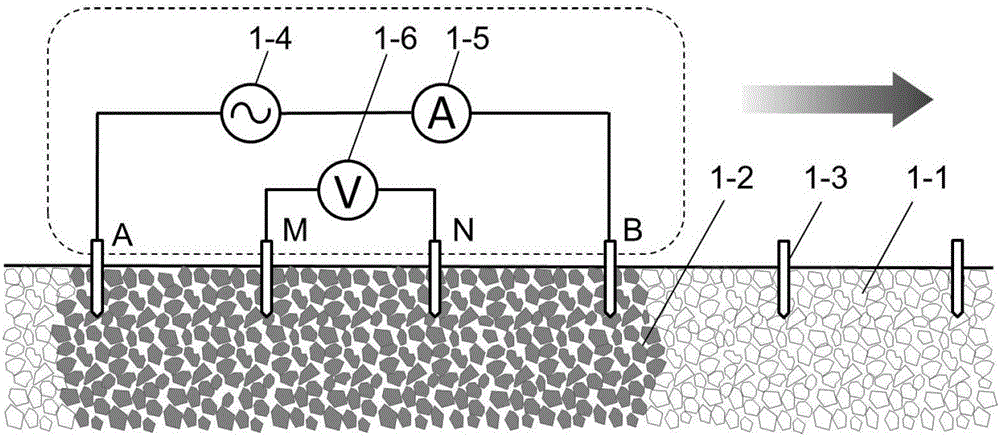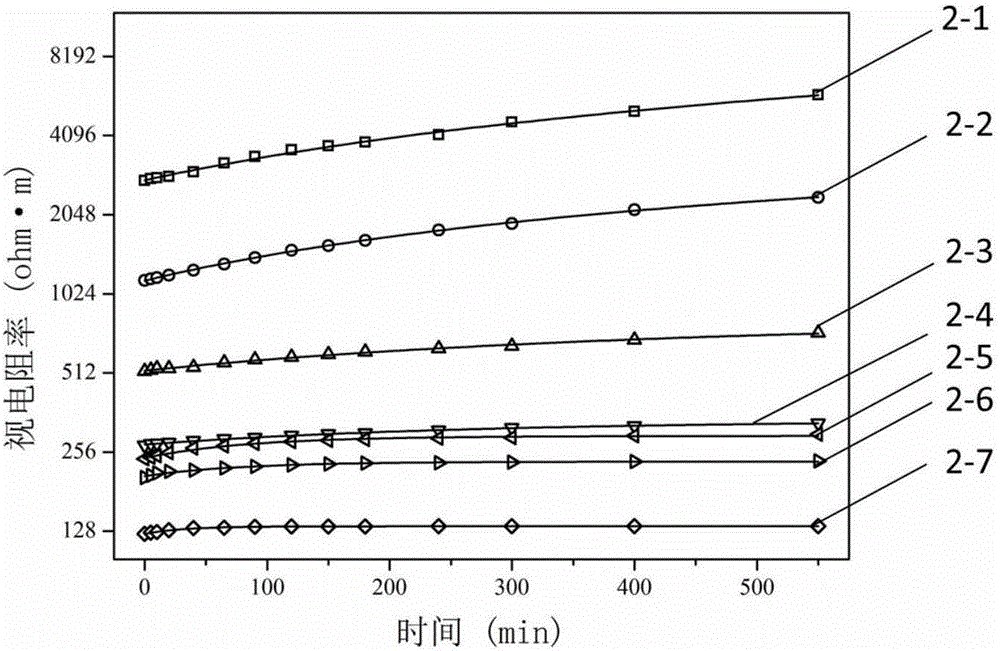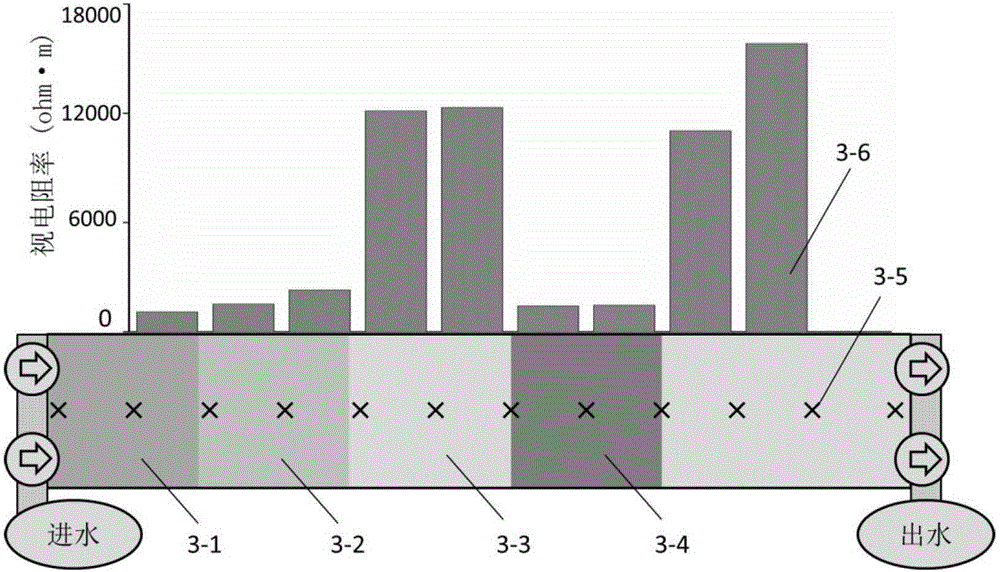Method for detecting clogging of subsurface flow constructed wetland
一种人工湿地、探测方法的技术,应用在潜流人工湿地堵塞的探测领域,能够解决二次污染、操作复杂、观察法滞后性等问题,达到便于计算、操作简单、实用价值高的效果
- Summary
- Abstract
- Description
- Claims
- Application Information
AI Technical Summary
Problems solved by technology
Method used
Image
Examples
Embodiment 1
[0032] After the water body is emptied, the apparent resistivity of fillers with different clogging degrees changes with time.
[0033]The constructed wetland of this embodiment adopts artificially produced subsurface flow constructed wetland models of different degrees of blockage, such as figure 1 As shown, the apparent resistivity of fillers with different clogging degrees is measured using the Wenner method. Electrodes 1-3 use copper rods with a diameter of 1.5 cm. The length of electrodes 1-3 is 20 cm. The distance is 40cm. The two adjacent electrodes M and N are measuring electrodes. The measuring electrodes are connected to the voltmeter 1-6. The two electrodes A and B on both sides of the measuring electrodes are the power supply electrodes. The power supply electrodes are connected to the AC power supply 1-4 and the ammeter 1- 5.
[0034] After the water body in the wetland bed is emptied, the apparent resistivity measurement is started. During the measurement, an AC...
Embodiment 2
[0037] Distribution of apparent resistivity in different areas of subsurface flow wetlands with blockage.
[0038] The constructed wetland of this embodiment adopts artificially produced subsurface flow constructed wetland models of different degrees of blockage, such as image 3 As shown, the front end of the subsurface constructed wetland bed is the clogged area 3-1 with a sediment specific gravity of 15%, followed by the clogged area 3-2 with a sediment specific gravity of 10%, and the non-clogged area 3-3 after that. This phenomenon is The blockage caused by the sedimentation of particulate matter at the water inlet of the subsurface wetland; in the middle of the unblocked area is the blocked area 3-4 with a sediment specific gravity of 25%. This type of blockage is a regional blockage caused by uneven water flow inside the subsurface wetland.
[0039] Electrodes 3-5 use iron rods with a diameter of 1.5cm. The electrodes 3-5 are inserted into the filler to a depth of 15cm ...
PUM
 Login to View More
Login to View More Abstract
Description
Claims
Application Information
 Login to View More
Login to View More - R&D
- Intellectual Property
- Life Sciences
- Materials
- Tech Scout
- Unparalleled Data Quality
- Higher Quality Content
- 60% Fewer Hallucinations
Browse by: Latest US Patents, China's latest patents, Technical Efficacy Thesaurus, Application Domain, Technology Topic, Popular Technical Reports.
© 2025 PatSnap. All rights reserved.Legal|Privacy policy|Modern Slavery Act Transparency Statement|Sitemap|About US| Contact US: help@patsnap.com



